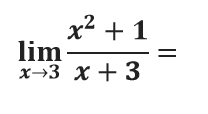-
 Home
Home
-
 News
News
Latest Educational News Stories
Daily update of all national, international news, picture stories, college / university announcements and educational events.
-
 Colleges
Colleges
Pakistan's Largest Database of Colleges and Universities
Explore Largest Directory of Private and Govt. Colleges, Universities and find best institute for your future Education.
-
 Courses
Courses
-
 Admission
Admission
-
 Lectures
Lectures
-
 Online Test
Online Test
Short Question
- 9th Class Physics Short Questions
- 9th Class Chemistry Short Questions
- 9th Class Math Short Questions
- 9th Class Biology Short Questions
- 9th Class Computer Short Questions
- 9th Class English Short Questions
- 10th Class Physics Short Question
- 10th Class Chemistry Short Question
- 10th Class Math Short Question
- 10th Class Biology Short Question
- 10th Class Computer Short Question
- 10th Class English Short Question
-
 Past Papers
Past Papers
-
 Date Sheets
Date Sheets
-
 Results
Results
Exam Results 2024
Check online Results 2024 Matric Inter BA BSc B.Com MA MSc M.Com CSS PCS MCAT ECAT of all educational boards and universities in Pakistan
-
 Study Abroad
Study Abroad
Study Abroad Programs and Opportunities for Pakistani Students
Explore free study abroad search to find programs, consultants, events to study in USA, UK, Australia, China, Malaysia and many others.
-
 Jobs
Jobs
-
 Tutors
Tutors
-
 More
More
-
 Apps
Apps
MCQ's Test For Chapter 0 "FSC Part 2 Mathematics Chapter 1 Test Online"
Try The MCQ's Test For Chapter 0 "FSC Part 2 Mathematics Chapter 1 Test Online"
-
Total Questions20
-
Time Allowed30
Question # 1
Let f(x) = x2, then range of f is the set of all:
Question # 2
If y = (x), then the variable x is called --------- variable of a function f.
Question # 3


Question # 4
Cosh2 x - Sinh2 x =
Question # 5


Question # 6
The symbol y = f(x) i.e. y is equal to f of x, invented by Swiss mathematician-----------:
Question # 7
Which one is an identity function ?
Question # 8
If a variable y depends on a variable x in such a way that each value of x determines exactly one value of y, then y is a __________ of x.
Question # 9
Which one is a constant function ?
Question # 10
If a function f is from a set X to a set Y, then set X is called the _______ of f:
Question # 11
Which one is not an exponential function ?
Question # 12
Cosh2 x + Sinh2 x =
Question # 13
Every relation, which can be represented by a linear equation in two variables, represents a:
Question # 14
If f(x) = |x|, f(x) is a:
Question # 15
If the degree of a polynomial function is ------------, then it is called a linear function:
Question # 16


Question # 17


Question # 18


Question # 19


Question # 20
Inverse hyperbolic functions are expressed in terms of natural:
FSC Part 2 Mathematics Chapter 1 Online Test MCQ's
Top Scorers Of Chapter 0 "FSC Part 2 Mathematics Chapter 1 Test Online" MCQ`s Test
-
B Baig 01 - Nov - 2025 00 Min 58 Sec 20/20 -
M Maidaa Mukhtar 01 - Sep - 2025 11 Min 04 Sec 20/20 -
I Inamullah Gurmani 10 - Jan - 2025 02 Min 05 Sec 19/20 -
M Malaika Usman 16 - Jan - 2025 02 Min 21 Sec 19/20 -
M Muhammad mumtaz 27 - Dec - 2024 06 Min 35 Sec 19/20 -
M Meerab Fatima 24 - Oct - 2025 02 Min 10 Sec 18/20 -
A Ai Covers 07 - Sep - 2025 02 Min 39 Sec 17/20 -
H Huzaifa Imran 01 - Nov - 2025 10 Min 20 Sec 17/20 -
R Rida Virk 08 - Jan - 2025 03 Min 35 Sec 16/20 -
S Sami Jutt 28 - Oct - 2025 06 Min 01 Sec 15/20 -
Z Zameer 21 - Dec - 2024 07 Min 20 Sec 15/20 -
R Ramzan Tahir 01 - Oct - 2025 26 Min 16 Sec 15/20 -
A Adnan ALI 08 - Oct - 2025 07 Min 38 Sec 14/20 -
H Hamas Mughal 17 - Dec - 2024 03 Min 03 Sec 13/20 -
H Hamza Ameer 18 - Jan - 2025 05 Min 42 Sec 13/20
FSc Part II Mathematics Chapter 0 Important MCQ's
| Sr.# | Question | Answer |
|---|---|---|
| 1 |

|
A. Constant function
B. Absolute linear function
C. Linear function
D. Quadratic function
|
| 2 | Which one is not an exponential function ? | |
| 3 | A function, in which the variable appears as exponent (power), is called a / an -------- function. |
A. Constant
B. Explicit
C. Exponential
D. Inverse
|
| 4 | Which one is a constant function ? |
A. f(x) = x2
B. f(x) = x
C. f(x) = x + 1
D. f(x) = 14
|
| 5 | If a function f is from a set X to a set Y, then set X is called the _______ of f: |
A. Domain
B. Range
C. Co-domain
D. None of these
|
| 6 | The linear function f(x) = ax + b is an identity function if: |
A. a = 0, b = 1
B. a = 1, b = 0
C. a = 1, b = 1
D. a = 0, b = 1
|
| 7 |

|
A. Parabola
B. Hyperbola
C. Ellipse
D. Circle
|
| 8 | If a variable y depends on a variable x in such a way that each value of x determines exactly one value of y, then y is a __________ of x. |
A. Independent variable
B. Not function
C. Function
D. None of these
|
| 9 | Let f(x) = x2, then range of f is the set of all: |
A. Real numbers
B. Non-negative real numbers
C. Non-negative integers
D. Complex numbers
|
| 10 |

|
A. R
B. R - {2}
C. R - {2, -2}
D. R - {-2}
|


















